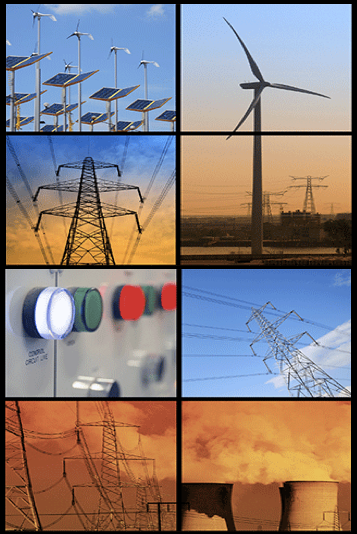 Power utilities – With increasing requirements for the integration and deployment of renewable energy, power utilities must now manage a much more complicated energy grid. Sources of power generation are no longer unique points in the grid as individual residential solar generation, solar farms, wind farms, tidal power generation and other power generation sources must be integrated into the grid wherever they are located. At any given time, power contributions from these sources can vary dramatically, or even fail and create fault conditions on the grid. This increased complexity drives the need for new levels of real-time monitoring, analytics and control.
Power utilities – With increasing requirements for the integration and deployment of renewable energy, power utilities must now manage a much more complicated energy grid. Sources of power generation are no longer unique points in the grid as individual residential solar generation, solar farms, wind farms, tidal power generation and other power generation sources must be integrated into the grid wherever they are located. At any given time, power contributions from these sources can vary dramatically, or even fail and create fault conditions on the grid. This increased complexity drives the need for new levels of real-time monitoring, analytics and control.
Power utilities must be able to control power ingress to the grid, sense power quality across multiple location and integrate new control new systems to ensure reliable power quality and availability. This new complexity creates a significant demand for IoT capabilities. Monitoring grid assets, controlling infrastructure to manage renewables and managing of new “micro-grids” drives new requirements for connectivity and control. From asset device connectivity and control, to data and control transport, to data management to analytics and interworking with back end systems, power utilities are already benefiting from new IoT deployments, and much more is needed and in the works.
According to a recent paper by Deloitte University Press: “IoT can improve the efficiency and performance of the power grid in three phases: first, by gathering data from sensors to improve the resilience of the grid; then through enablement, where utilities use that data to actively manage resources; and finally, optimization, where all stakeholders are able to make informed decisions about power usage and generation. Through these three phases, IoT offers some indications of how utilities can not only survive, but thrive, in this new competitive environment.” This growing value chain of connect, monitor, control, analyze, predict, and optimize is a common theme across IIoT deployments. While simply to connect, monitor and control often provides sufficient value to justify IIoT deployment, the later stages of value creation create still greater value in the long term.
SCADA (Supervisory Control and Data Acquisition) modernization, continued advancements of AMI deployments, new control capability to efficiently and more cost effectively detect (and even auto correct) faults, infrastructure, allowing the ability to shift consumers and enterprise energy use to off peak hours (and associated billing advantages), and better insight to manage the aging infrastructure and optimize power delivery systems are a few of the values power utilities are seeing from IoT. These are the sources of IIoT economic value for power utilities.
